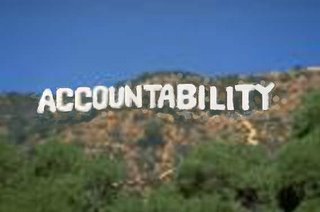The University of New Hampshire media relations office asked me for some comments on today's testimony in the US House by the Government Accountability Office related to the estimated $1.4 billion of emergency assistance lost to fraud and poor oversight by the agency. I did a quick read of the GAO Report as well as a preliminary report issued in February, and here is draft of what the UNH office put out....
[W]hile the GAO testimony -- – the purchase of diamonds, the meals at Hooters, etc. – makes for good headlines in the tabloids and on the cable news shows, they need to be approached with caution. The GAO report, while shocking, needs to be understood in both context and details. The report itself is part of the GAO team’s ongoing investigation of FEMA expenditures in response to Katrina and Rita. It is based on a sample of 250 payments from among the 2.5 million made during the emergency response phase between October 2005 and February 2006. Many of the general figures being headlined in the news today (especially the 1.4 “billion dollars” figure) are estimations based on the limited information GAO had access to, and the real amount lost to fraud and incompetence might be much more – or even much less. Even GAO notes that the figure might be as low as $600 million. Nevertheless, even if the losses due to fraud are half of what is being reported, this GAO investigation provides substantial support for the charges that FEMA’s capacity and ability to control possible waste, fraud and abuse is not sufficient. There is obviously an accounting and management breakdown.
But there is another side of the Katrina/Rita response effort that the GAO report fails to highlight. In combination, Katrina and Rita were two catastrophic events at an unprecedented scale, and FEMA was faced with significant pressure to get assistance out to as many of the victims as possible as quickly as possible. The pressure to act expeditiously was magnified by the media circus that surrounded the flooding of New Orleans, and especially the focus on FEMA’s Michael Brown.
The actions FEMA took to provide some modicum of immediate, few-questions-asked assistance to appplicants from impacted areas is a standard practice initiated in 1994 by FEMA in its response to the Northridge earthquake. In that case, 350,000 families were provided with immediate assistance at a cost of $1 billion. The head of FEMA at the time, James Lee Witt, notes this approach was developed in response to complaints that FEMA was too slow to respond to the immediate needs of victims after Hurricane Andrew in 1992. Not surprisingly, Witt and FEMA were criticized at the time for “rushing to ‘give away money’.”
Like other agencies that deal with providing emergency assistance, FEMA faces a situation in which it is “damned if it does, and damned if it doesn’t” meet the public’s expectations. On the one hand, FEMA is expected to provide quick and sufficient assistance to victims of disasters, and over the past decade it has made great strides in applying technologies to expedite aid to those who need it. At the same time it is expected (according to the GAO report) to take steps to “validate the identity of the registrant, the physical location of the damaged address, and ownership and occupancy of all registrants at the time of registration” – all in the face of crisis conditions where most of government’s limited resources are being devoted to dealing with the immediate chaos of floods, evacuations, public health threats, and the like.
The GAO is an auditing agency attached to Congress which has a history of independence and integrity, and one cannot fault the methods used in this “forensic” investigation of FEMA. Nevertheless, one would expect a more balanced approach that takes into account the dilemmas facing FEMA and the unprecedented nature of the Katrina/Rita disasters. Perhaps the followup report in this ongoing investigation will provide that.
It seems to me that the GAO ought to do a more credible job and avoid intentionally engaging in the meda hype/circus.
|



Comments on "GAO and FEMA -- an imbalanced assessment"
post a comment